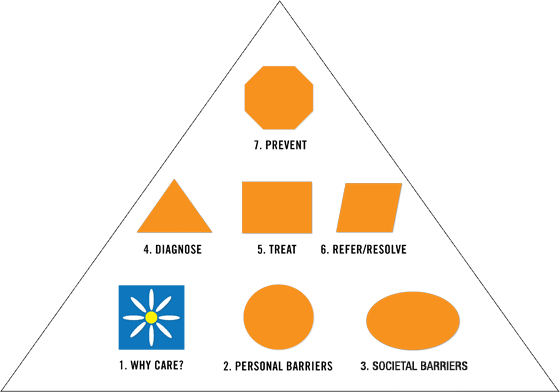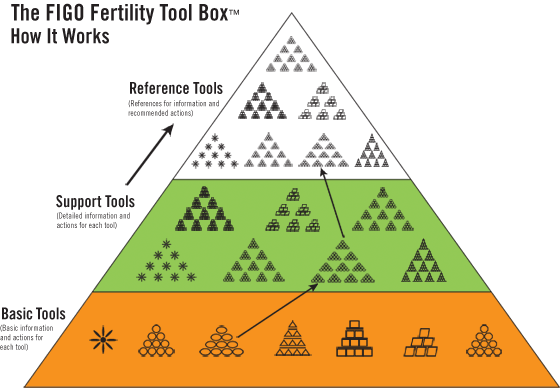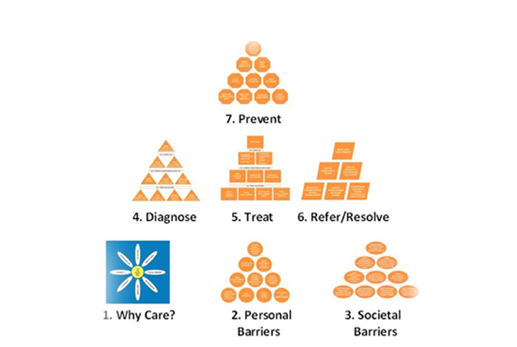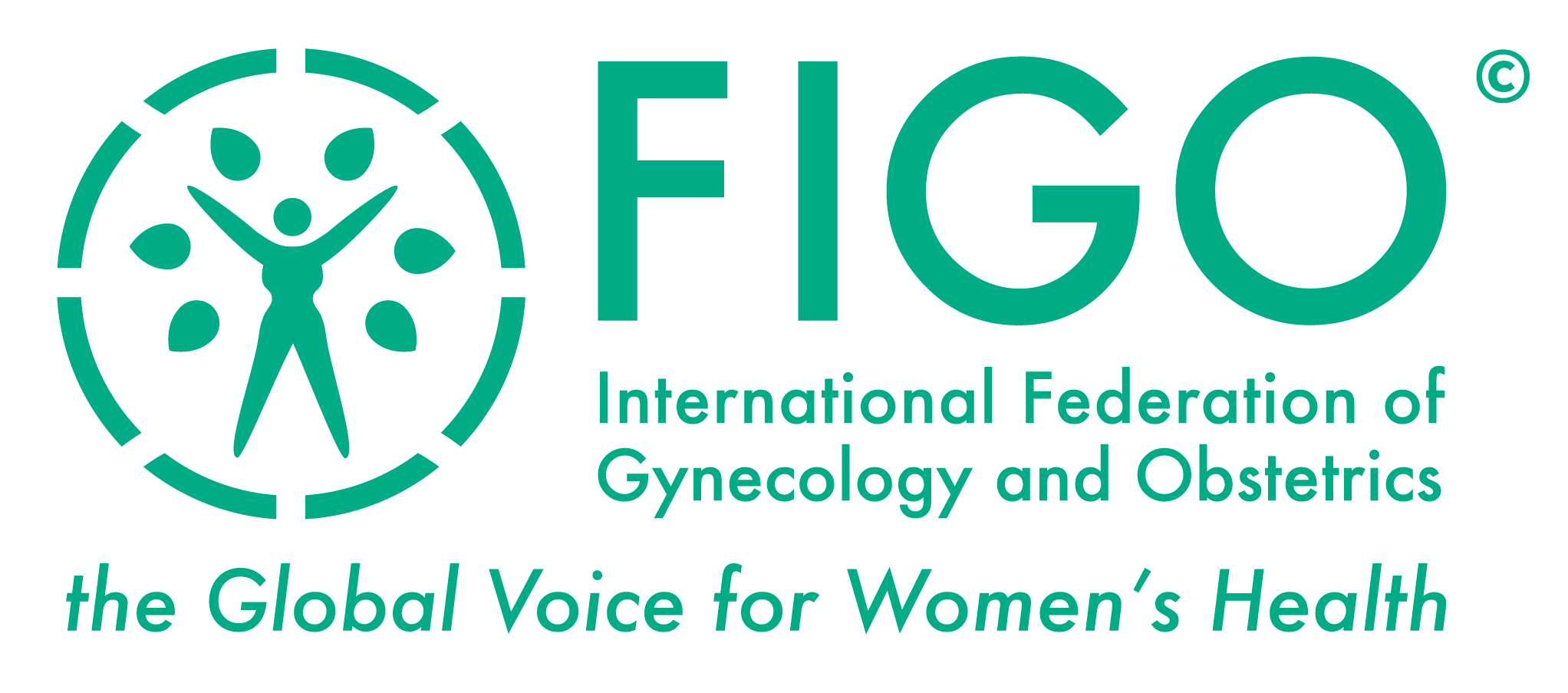Who should use The FIGO Fertility Toolbox ? The FIGO Fertility Toolbox is a “How To” document intended for use by anyone who is involved in or affected by infertility (stakeholders) to provide a comprehensive and integrated set of tools that will increase access to treatment and prevention, and so reduce the global burden of infertility.
It was designed in the first instance for health care workers, but others who want to make a difference in the lives of infertile people may also find it useful. The FIGO Fertility Toolbox is directed towards women’s healthcare practitioners who can provide reproductive healthcare services, namely women’s health nurses, midwives, and family doctors. It is also intended for use by primary care physicians, obstetricians/gynecologists and reproductive endocrinologists and surgeons who will find its evidence-linked approach and reference list very useful. However, the Toolbox can also be used by healthcare personnel without medical training, be they in policy/government/ organizational positions or lesser trained women’s healthcare providers, including lay providers and support groups. Different Tools are intended for use as appropriate and possible by stakeholders in their unique situations.
The Toolbox is available in hard copy but also as an electronic version for computers and cell phones.
Clicking on your computer or cell phone in The FIGO Fertility Toolbox The FIGO Fertility Toolbox is available in paper or hard copy as well as a program for your computer or mobile device. In the paper version, the Toolbox has these initial instructions first (Home), followed by more detailed instructions (How To) and then the 7 Tools in order; each one starts with the Basic Tool, then the Support Tool and then the References. After the 7 Tools is a section with all the references that also contains Recommended Reading and a Glossary. At the end is a section on About Us. You can look through the hard copy version just like a book to find whatever Tool, Level and Action you want to do.
In the electronic and cell phone app version, you can click on the Tools arrow at the top of the page that will take you to The Tools Pyramid where you can choose the Tool you want to use by clicking on that Tool. You can also click on the Levels arrow to go to The Levels Pyramid™ to choose the level you want, or you can click on the Actions arrow to go to The Actions Pyramid™ to choose the Action you want to do. The Tools, Levels and Actions are described in more detail just below.
To make it even easier, you can click on the small pyramid icons at the top of each page to choose your Tool, Level and Action. Or you can also choose from a written list in the left hand column. Use whatever clicking method works best for you. Try it out and you will see how easy it is to find what you want quickly so that you can help infertile people.
What’s in the Toolbox ? The FIGO Fertility Toolbox contains 7 Tools to help you tackle the disease/disability of infertility. Each Tool provides information on how to manage a particular aspect of infertility: Tool 1: The FIGO Fertility Daisy—why we should care about infertility; Tool 2: Overcome Personal Barriers; Tool 3: Overcome Societal Barriers; Tool 4: Diagnose Infertility; Tool 5: Treat Infertility; Tool 6: Refer/Resolve Infertility; Tool 7: Prevent Infertility.
These tools provide a comprehensive approach to infertility as both an individual and a global disease/disability. Each Tool is represented by a pyramid, except for Tool 1—The FIGO Fertility Daisy, which is different and addresses why we should care about infertility. Each pyramid consists of multiple elements all of one shape that is unique for each tool. These elements each reflect one situation/action that is important and can be dealt with using the “Tool” in that element.
Below is The Tools Pyramid which contains these 7 Tools.
The Tools Pyramid™

The FIGO Fertility Toolbox is intended to empower people to take action in their setting. It is based on the best available evidence, comprehensive, integrated and easy to use. It involves teaching, but the primary objective is to empower action, especially through collaboration with other interested people.
The FIGO Committee on Reproductive Medicine (CRM) recognizes and appreciates the vastly different socioeconomic, cultural, religious, healthcare system and other differences among and within the 125 FIGO country members. Therefore, The FIGO Fertility Toolbox focuses on universal principles, recognizing that each country and region will decide how to utilize this resource in a unique way that is most appropriate for them. In other words, it has been designed for maximum flexibility in its application by many different stakeholders, in addition to healthcare providers, in many different global situations.
Importantly, because the Toolbox's primary purpose is to expand access to fertility care in resource-constrained settings, it is not intended to address in detail the more sophisticated infertility treatments. However, it does include brief references to more advanced treatments and, importantly, it does include Tool 6. Refer/Resolve with instructions on how and when to refer to these resources.
Therefore, major principles of the Toolbox are: it is focused on low-resource settings; it is flexible so that it is applicable in almost any country of the world; it is aimed primarily at mid-level practitioners such as nurse-practitioners and midwives; it is usable by all types and levels of healthcare professionals, stakeholders, policy-makers and patients; it is easily distributed electronically and with mobile applications; it takes advantage of new technology; it is sufficiently innovative to be interesting.
How do the Tools work? There are 3 levels of Tools for each of the 7 Tools.
Each of the 7 Basic Tools contain information that is purposely brief and succinct--just a simple statement or brief summary of the Daisy and each of Actions described in the six Actions Pyramids. These Actions describe the most basic Actions that can be done to increase access to and quality of infertility care. The purpose of The Basic Tool is to ensure that all stakeholders, even those with little education or training, are aware of all aspects/elements of issues that must be addressed. The Basic Tools icons are coloured orange so that you know when you are using a Basic Tool.
Each of the 7 Support Tools provide more information and detail so that you know what to do to take Action. Support Tools are the next highest in the hierarchy/level and consist of text approximately one page in length for each of the aspects/elements identified in the Basic Tool shapes and for which an Action is recommended. The Support Tools are linked directly to their respective Basic Tool shapes in their respective pyramid figures by small icons whose shapes and colours designate the tool in which they belong and their position in the pyramid, reflecting the level of complexity of the activity and resources required to perform it. The Support Tool describes in more detail the aspect of infertility care being addressed, provides references using the best available evidence and describes how to take an Action. The details of clinical care for diagnosis, treatment, referral/resolution and support are described at the level of a mid-level provider such as a nurse practitioner or midwife who is not a physician. However, the Support Tools may be learned by interested individuals and/or used for teaching and can be a useful guide for well-educated healthcare providers not familiar with infertility. Support Tools are coloured green so that you know when you are using a Support Tool.
The Reference Tools are lists of references that provide evidence for the information and recommended Actions in the Basic and Support Tools. Reference Tools are coloured white. Reference Tools reflect the top level of the hierarchy of Tools. References are used to justify the statements and recommendations in the Support Tools. Only the best available evidence from important references from meta-analyses, highly regarded journals, professional organizations and/or significant national or international organizations are used. The FIGO Committee on Reproductive Medicine has utilized and referenced the expert work of other organizations, including the World Health Organization (WHO), American Society for Reproductive Medicine (ASRM), European Society for Human Reproduction and Embryology (ESHRE), International Federation of Fertility Societies (IFFS) and others. In several instances evidence was surprisingly scarce; in those situations individual papers were sometimes used because they had a pertinent message relevant for our Toolbox. The Reference Tools include citations of all the references used in the Support Tool. It also includes links to full-text manuscripts/articles of all the references when possible. Reference Tools also include a section titled, Recommended Reading, which includes additional sources of information that might be useful for anyone wishing to learn more about the statements and information in the Support Tool and/or want to learn more about infertility.
A Glossary is found after The Reference Tool. The Glossary provides definitions and explanations of abbreviations and acronyms and is coloured white like the References.
By colouring the Levels icons this way, you can always tell whether you are using a Basic Tool, Support Tool or Reference Tool. Below is The Levels Pyramid which shows how the Basic Tools, Support Tools and Reference Tools relate to each other.
The Levels Pyramid™

How do I know what to do?—The Actions Pyramids: With the exception of the Daisy (Tool 1), all tools have the shape of a pyramid. At the base of each pyramid are Actions that can be taken in low-resource settings; that is, they are often simpler, elementary, involve fewer people and/or are low-cost interventions or opportunities.
The Actions at the base of the pyramid reflect initial situations/actions that require very few resources, often just an interested person even without financial resources who is functioning at the lowest healthcare level or even outside the healthcare system. It tells them “What to do” even in the lowest resource settings. The intermediate level of situations/actions are higher in the pyramid and reflect a greater need for some type of resource, be it institutional, personnel and/or financial in order to take action. The top of the pyramid Actions reflect activities/actions that need highly trained/specialized personnel, institutions, healthcare or societal systems or financial resources. This structure of a hierarchy or levels represents a continuum of care, not a categorical one, so as to take into account the wide variety of situations among and within different countries.
As you move higher up in the pyramid, generally more resources are required to take Actions that are usually more complex. You can think of it as a kind of ladder—as you climb higher it usually gets a bit more complex or complicated. However, sometimes or in some situations, it might be easier higher up on the ladder, and the elementary aspects might be more challenging. Your goal is to do whatever you can do at any level in any of the 7 Tools in The Actions Pyramid.
The Actions Pyramid™

Higher resource and More Difficult Actions are towards the top of each Tool Pyramid
Lower resource and Easier Actions are towards the bottom of each Tool Pyramid
Which Tool should I use? The one you think will work best for you and will give you some results quickly. Doing something within the Toolbox is better than doing nothing. There is no right or wrong way to make a start. Then, if you want to do more you can choose other Tools or individual aspects of other Tools to build on what you have already achieved. Or, if you want to be very systematic and are very committed you can start with Tool 1 and work your way through the entire Toolbox .
The Toolbox is intended for use by all stakeholders in different professions (such as, clinical, policy makers, patients, others) at all different levels of education and training in all types of low to high resource settings. Different parts of the Toolbox can be used by different individuals attempting to provide access to quality fertility care.
All stakeholders can quickly get a comprehensive overview of all aspects of fertility by reading each Basic Tool section of the 7 tools. Stakeholders who want to take an action can use the appropriate Support Tool that applies to the situation/problem they are addressing. The Support Tool provides all the information necessary to empower an individual to take action and do something. Those who are able to utilize higher resource information can use the Reference Tool to learn and do more.
What if I can’t implement some of the recommendations? Then drop it and move onto something that you can do or implement. No single component of the Toolbox is so essential to helping infertile people that your efforts will fail if you can’t apply it. Using even one or two Actions in one or two Tools will empower you to help many infertile individuals.
What if I want to adapt a Tool? Just do it! The Toolbox can be adapted to work in any type of healthcare setting anywhere in the world. You know what works best in your situation. Never stop caring and trying.
Future Development of The FIGO Fertility Toolbox. The FIGO Committee on Reproductive Medicine will develop a questionnaire/survey to obtain feedback on use of the Toolbox . Blogs, social media and field testing through FIGO national societies and thought leaders will be pursued. The FIGO CRM will evaluate feedback, modify the Toolbox to keep it standardized but evolving, facilitate discussion and dissemination of ideas to and among stakeholders, and facilitate national/regional modifications to enhance the Toolbox . It is intended that The FIGO Fertility Toolbox will be modified based on experience with its use in the many unique conditions that exist globally and evolve over time to become an increasingly useful and dynamic tool that increases access to quality infertility care globally.
Does the Toolbox have a compliments and complaints section? Yes, it is called the FIGO Committee on Reproductive Medicine. Email us at fertilitytoolbox@figo.org. We would love to hear from you about what you like and what works in the Toolbox and what doesn’t. Let us know how you are using it. We hope to constantly improve The FIGO Fertility Toolbox to make it a better Tool to help you and all healthcare workers and other stakeholders tackle the disease/disability of infertility.
